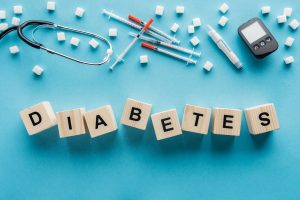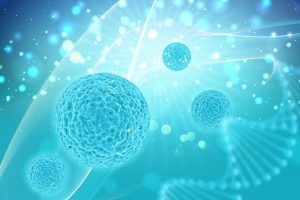
Stem Cell Treatment for Muscular Dystrophy
Muscular dystrophy (MD) refers to a group of genetic disorders characterized by progressive degeneration and weakness of the muscles. It is caused by mutations in genes responsible for the production of proteins necessary for the structure and function of muscles.
The current curative treatment options for MD are limited. The available treatments mainly focus on managing symptoms, delaying disease progression, and minimizing complications such as respiratory infections. The goal is to enhance the quality of life for individuals living with muscular dystrophy.
However, stem cell treatment has shown promise in offering potential benefits for different forms of muscular dystrophy. Stem cell therapy has the ability to improve various impaired muscular functions associated with these conditions. By introducing healthy stem cells into affected muscles, the regenerative properties of stem cells can help repair and replace damaged muscle tissue.
How Does Stem Cell Therapy Help in Muscular Dystrophy?
Stem cells have the ability to differentiate into various cell types, they can regenerate damaged muscle tissues in patients with muscular dystrophy, with great potential to enhance muscle function, slow disease progression, and improve the overall quality of life for those affected by muscular dystrophy.
In stem cell therapy for muscular dystrophy, stem cells are either derived from the patient’s own body (autologous) or from a donor (allogeneic). These stem cells are typically mesenchymal stem cells (MSCs) or induced pluripotent stem cells (iPSCs).
When administered to patients, these stem cells have several mechanisms of action:
- Differentiation: Stem cells can differentiate into muscle cells, replacing the damaged or lost muscle tissue. This regeneration process helps improve muscle strength and function.
- Paracrine effects: Stem cells secrete various growth factors and cytokines that promote tissue repair and reduce inflammation. These molecules can enhance the survival of existing muscle cells and stimulate the production of new healthy muscle cells.
- Immunomodulation: Stem cells possess immunomodulatory properties, which means they can regulate the immune response. In muscular dystrophy, the immune system may contribute to muscle damage. Stem cells can help modulate the immune response, reducing inflammation and minimizing further muscle degeneration.
- Trophic support: Stem cells release factors that support the survival and growth of nearby cells. This trophic support helps create a favorable environment for muscle regeneration and repair.
Free Consultation
Benefits of Stem Cell Therapy in Muscular Dystrophy
In preliminary studies, 79-85% of patients with different forms of muscular dystrophy gained benefits from stem cell therapy in many aspects. After stem cell therapy, MD patients usually experience the improvements listed.
- Increased muscle strength
- Increased muscle mass
- Improved gait
- Improved balance
- Improved mobility
- Improved respiratory function
- Decrease in CPK
- Increase in lifespan
How Do We Help?
Not Only Stem Cells
Stem cell therapy brings hope for many medical conditions, including muscular dystrophy, we believe that patients can live a better quality of life with effective and safe treatment.
We combine cutting-edge stem cell technology, the most experienced medical professionals in managing stem cell therapy, modern facilities and dedicated services that are effective to ensure the best possible treatment outcomes.
The stem cells used in our treatment are manufactured in GMP-certified laboratories, a series of processing and quality assurance procedures have been developed to meet the national and international standards, to ensure safe and effective products are delivered to our patients.
In addition to stem cell therapy, we provide comprehensive treatments that include, rehabilitation, remedies and natural therapies, each patient receives a personalized treatment plan tailored to meet his/her particular needs, in order to get the best our of the treatments.
- Stem cell injections
- Experienced doctors
- Daily therapies
- Tests & exams
- One-stop services
- Interpreter & daily support
- Transportation
- Sightseeing
Is Stem Cell Therapy Right for Me?
Learn more information about stem cell therapy and comprehensive treatment programs for muscular dystrophy. Contact us and book your treatment now.
Muscular Dystrophy FAQs
Muscular dystrophy is a group of genetic disorders characterized by progressive muscle weakness and degeneration. It is caused by mutations in genes that are involved in the structure and function of muscle fibers.
In individuals with muscular dystrophy, the muscles gradually weaken and break down over time. This can lead to difficulties in mobility, balance, and everyday activities. Muscular dystrophy can affect various muscles in the body, including those responsible for movement, breathing, and heart function.
Muscular dystrophy is primarily caused by genetic mutations. These mutations affect the genes responsible for the structure and function of muscle fibers.
In most cases, muscular dystrophy is an inherited condition, meaning it is passed down from parents to their children. The specific inheritance pattern varies depending on the type of muscular dystrophy. Some forms are inherited in an autosomal dominant pattern, while others are inherited in an autosomal recessive pattern or linked to the X chromosome.
There are several types of muscular dystrophy, each with distinct features, age of onset, and patterns of muscle involvement. The most common form is Duchenne muscular dystrophy, which primarily affects boys and typically appears in early childhood. Other types include Becker muscular dystrophy, facioscapulohumeral muscular dystrophy, and myotonic dystrophy, among others.
Muscular dystrophy is characterized by progressive muscle weakness, muscle wasting, and difficulties with motor skills. Individuals with muscular dystrophy may experience delayed motor milestones, such as sitting up, crawling, or walking.
They may also develop contractures, where muscles and tendons become tight, leading to joint deformities and limited range of motion. Fatigue can be a common symptom, and respiratory problems may arise due to weakened respiratory muscles.
Some types of muscular dystrophy can affect the heart muscle, resulting in cardiac complications. It is important to note that symptoms may vary depending on the specific type of muscular dystrophy, and early diagnosis and management are crucial for optimizing outcomes and quality of life.
The diagnosis of muscular dystrophy typically involves a combination of medical history evaluation, physical examination, and specialized tests. The healthcare provider will inquire about symptoms, family history of the condition, and perform a thorough physical examination to assess muscle strength, mobility, and any signs of muscle wasting or contractures.
Diagnostic tests may include blood tests to check for specific genetic markers or muscle enzymes, electromyography (EMG) to evaluate muscle and nerve function, muscle biopsy to examine muscle tissue under a microscope, and genetic testing to identify specific gene mutations associated with different types of muscular dystrophy.
These diagnostic procedures help in confirming the presence of muscular dystrophy, determining the specific type, and guiding appropriate management and treatment strategies.
The current treatment approach for muscular dystrophy aims to manage symptoms, slow disease progression, and enhance the quality of life.
This often involves a multidisciplinary approach with input from various healthcare professionals, including neurologists, physical therapists, occupational therapists, and respiratory therapists. Treatment may include physical therapy and regular exercise to maintain muscle strength and flexibility, assistive devices and mobility aids to improve mobility and independence, medications such as corticosteroids to help slow down muscle degeneration and improve muscle strength, and respiratory support to manage breathing difficulties.
Additionally, ongoing monitoring and management of cardiac function, nutritional support, and emotional support are important components of the overall treatment plan for individuals with muscular dystrophy. It is crucial to consult with healthcare professionals for personalized treatment recommendations based on the specific type and progression of the disease.
References
Research and studies about stem cells in the treatment of muscular dystrophy.
- Falzarano MS, Scotton C, Passarelli C, Ferlini A. Duchenne Muscular Dystrophy: From Diagnosis to Therapy. Molecules (Basel, Switzerland). 2015;20(10):18168-84.
- Birnkrant DJ, Bushby K, Bann CM, Apkon SD, Blackwell A, Brumbaugh D, et al. Diagnosis and management of Duchenne muscular dystrophy, part 1: diagnosis, and neuromuscular, rehabilitation, endocrine, and gastrointestinal and nutritional management. The Lancet Neurology. 2018;17(3):251-67.
- Elangkovan N, Dickson G. Gene Therapy for Duchenne Muscular Dystrophy. Journal of neuromuscular diseases. 2021;8(s2):S303-s16.
- Lim KR, Maruyama R, Yokota T. Eteplirsen in the treatment of Duchenne muscular dystrophy. Drug design, development and therapy. 2017;11:533-45.
- Sienkiewicz D, Kulak W, Okurowska-Zawada B, Paszko-Patej G, Kawnik K. Duchenne muscular dystrophy: current cell therapies. Therapeutic advances in neurological disorders. 2015;8(4):166-77.
- Abdelbakey AEO, Soliman WT, Abo Elkheir W, Ali AE. Stem cell therapy as a potential therapy for Duchenne muscular dystrophy. Minia Journal of Medical Research. 2020;31(3):13-7.
- Sharma A, Sane H, Paranjape A, Bhagawanani K, Gokulchandran N, Badhe P. Autologous bone marrow mononuclear cell transplantation in Duchenne muscular dystrophy – a case report. The American journal of case reports. 2014;15:128-34.
- Dai A, Baspinar O, Yeşilyurt A, Sun E, Aydemir Ç, Öztel ON, et al. Efficacy of stem cell therapy in ambulatory and nonambulatory children with Duchenne muscular dystrophy – Phase I-II. Degenerative neurological and neuromuscular disease. 2018;8:63-77.
- Sharma A, Sane H, Badhe P, Gokulchandran N, Kulkarni P, Lohiya M, et al. A Clinical Study Shows Safety and Efficacy of Autologous Bone Marrow Mononuclear Cell Therapy to Improve Quality of Life in Muscular Dystrophy Patients. Cell Transplantation. 2013;22(1_suppl):127-38.
- Biressi S, Filareto A, Rando TA. Stem cell therapy for muscular dystrophies. The Journal of clinical investigation. 2020;130(11):5652-64.




